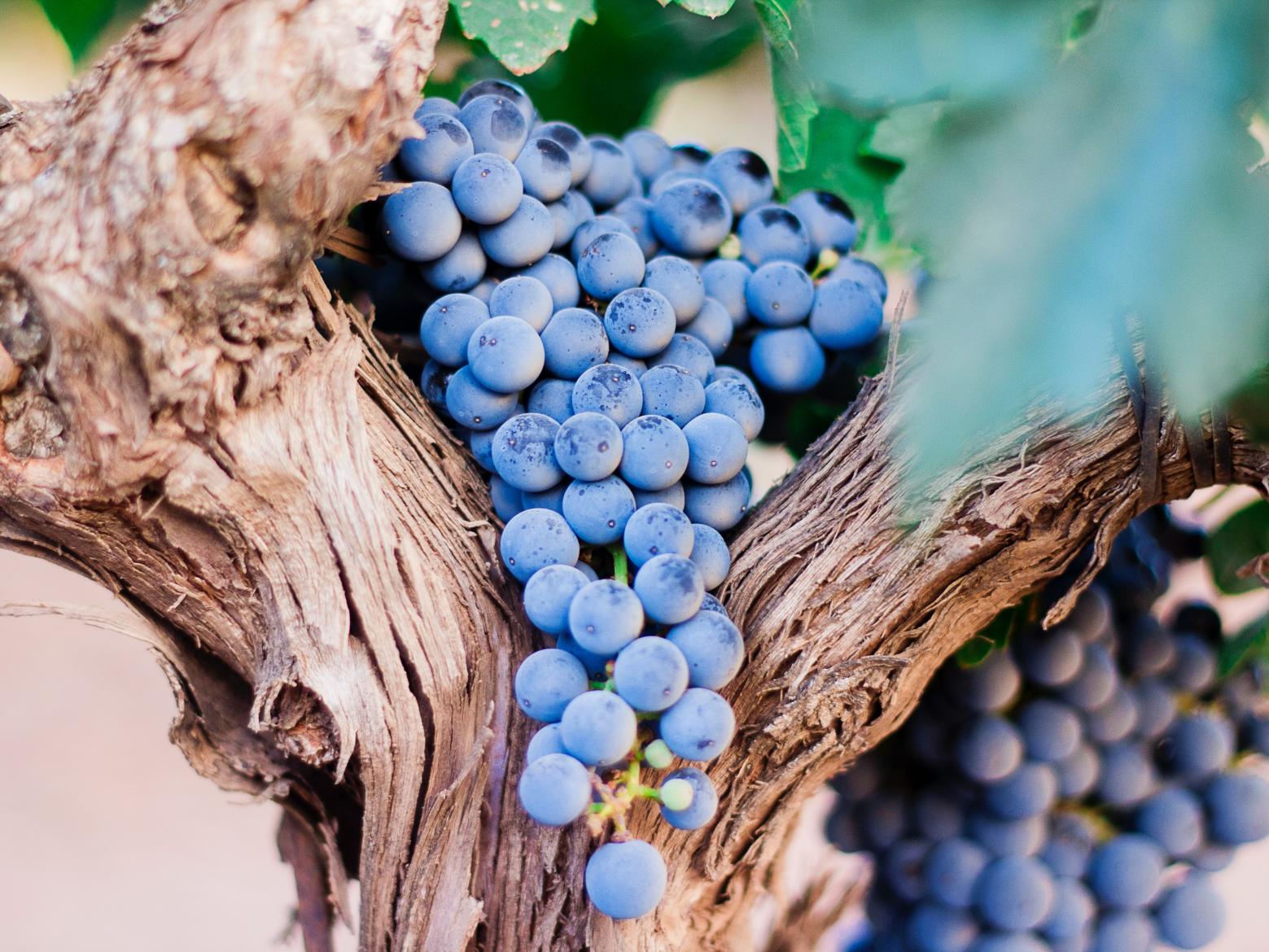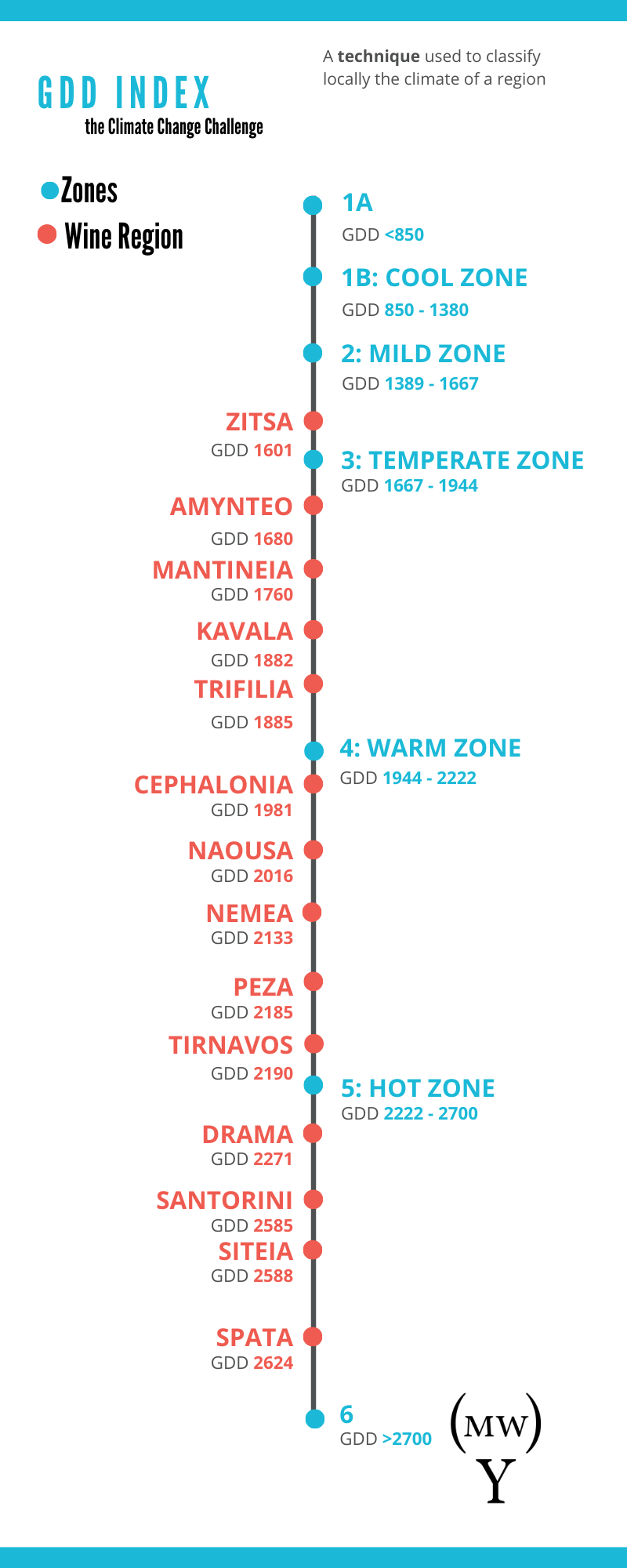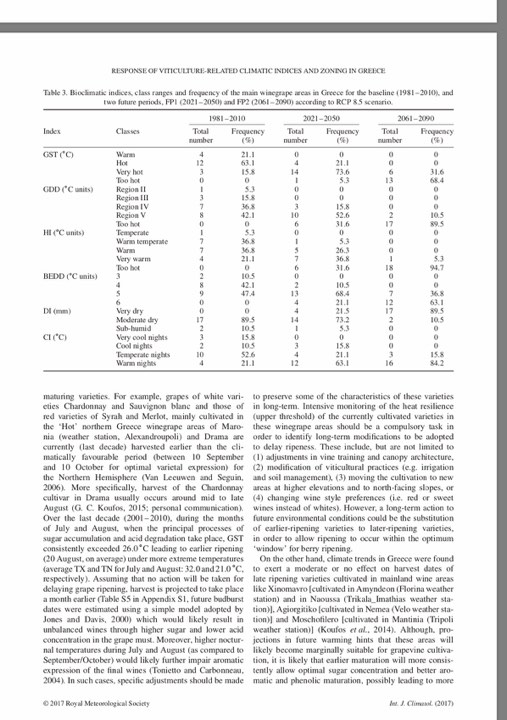The challenge of climate change in Greece
Countless pages have been written about the effect of climate change on viticulture (increases of temperature during the vine growth cycle have impacted the continuing suitability of varieties to the growing environment of their traditional sites in the N. Hemisphere). But, the essence of this question is what does this really mean for Greece. A recent study by Koufos, Mavromatis, Koundouras and Jones published in 2017, in the International Journal of Climatology, sheds some light onto this question.
Two important factors were established by the study. Firstly, the classification of areas according to their climate, and secondly a prediction of expected future developments for the periods of 2021-2050 and 2061-2090 respectively. At long last, this has put a climate database in place, which doesn't allow for wild guesses. Let me note here that the study is based on data from the period 1981-2010.
In order for one to be able to interpret the findings, a basic climatic marker called GDD (Growing Degrees Days) needs to be introduced. The GDDs according to the Winkler Index (WI) classify the areas into 5 categories, ranging from the coldest to the hottest (Regions I-V) and provide data on the style and ripening potential of the various varieties. Also, there is the Huglin index (HI) that classifies areas according to the potential for viticulture. Moreover, the Cool Night Index (CI) is also examined, which measures how cool nighttime temperatures are.
A summary of the findings reported (also shown in the infographic below):
For GDDs, 18 areas were classified as Regions IV & V according to (WI) and just 4 as Regions III (Trifylia, Kavala, Amyntaio, Mantinia). Only one, Zitsa, as Region II, whereas according to (HI) 18 districts were classified as 'Warm Temperate' and 'Warm', 4 as 'Very Warm' and only Trifylia as 'Temperate'.
The main areas are shown below:
1. Spata: GDD 2624 (Region V) - (HI) Very Warm – (CI) Warm nights
2. Drama: GDD 2271 (Region V) - (HI) Warm - (CI) Temperate nights
3. Amyntaio: GDD 1680 (Region III)-(HI) Warm Temperate-(CI) Very Cool nights
4. Peza: GDD 2185 (Region IV) - (HI) Warm Temperate - (CI) Temperate nights
5. Zitsa: GDD 1601 (Region II) - (HI) Warm Temperate – (CI) Very Cool nights
6. Kavala: GDD 1882 (Region III)- (HI) Warm Temperate - (CI) Temperate nights
7. Tyrnavos: GDD 2190 (Region IV)-(HI) Very Warm-(CI) Cool nights
8. Trifylia: GDD 1885 (Region III)-(HI) Temperate-(CI) Temperate nights
9. Santorini: GDD 2585 (Region V)-(HI) Warm-(CI) Warm nights
10. Sitia: GDD 2588 (Region V)-(HI) Warm-(CI) Warm nights
11. Mantinia: GDD 1760 (Region III)-(HI) Warm Temperate-(CI) Very Cool nights
12. Naoussa: GDD 2016 (Region IV)-(HI) Warm-(CI) Cool nights
13:. Kefalonia: GDD 1981 (Region IV)-(HI) Warm Temperate-(CI) Temperate nights
14. Nemea: GDD 2133 (Region IV) - (HI) Warm - (CI) Temperate nights
What does the above mean? The study reports that for example varieties such as Chardonnay & Sauvignon Blanc together with Syrah and Merlot, which are basically cultivated in the hot areas of Alexandroupolis (Maronia) and in Drama, have constantly been harvested earlier during the last decade. This is earlier than is the optimum maturation window for the varieties. On the other hand, for late varieties such as Xinomavro and Agiorgitiko, this climate change did not have such negative effects. On the contrary, it seemed to help with phenolic maturation.
The future
Nevertheless, the most ominous predictions are those made for the period we are about to enter, since for 2021-2050 the estimate, according to the WI, is that there will be no relatively cold area - Region II, there will be only 3 areas in Region IV, 10 in Region V, and 6 areas will be classified as 'too hot' from now on. For the period 2061-2090, the areas classified as ‘too hot’ will have increased to 17. According to the HI these will amount to 18.
This is the reality of the era we are living in. If we were inhabitants of Iceland we would probably be happy with the changes, but in an already hot country, it is certain that the Greek wine industry will face difficulties in the coming decades. For this reason, it is necessary to continuously explore the potential of varieties through clonal selection and to investigate their limits when above the recommended temperatures for their cultivation.
More details on the research
This study assessed current (1981-2010) and future (2021-2050 and 20161-2090) conditions based on principal climatic elements and six bioclimatic indices (i.e. Growing Season Temperature, Growing Degree Days, Huglin index, Biologically Effective Degree Days, Dryness Index and Cool Night Index) which were measured at 23 weather stations in close proximity to key viticultural areas of Greece on mainland, coastal and island sites. Mainland locations were generally colder, due to a greater heterogeneity of terroir aspects and elevation, while coastal locations and islands faced proportionally more extreme temperatures and drier conditions. Trend analysis revealed that the rates of increase in minimum temperatures were higher than the respective rates of increase in maximum temperatures, at most locations. Climate change scenarios, derived from the regional climate model RegCM4, suggested significant shifts towards warmer and drier conditions across all locations in the future. These conditions will likely advance phenology and harvest beyond what is considered suitable for the different varieties and may well have a detrimental impact on wine quality. Differences in the impact affected are more likely to be seen in wine areas currently cultivated with early ripening varieties (variety suitability will decrease), rather than those with later-ripening varieties (consistency in ripening will increase). Overall, the prediction of future climate changes will challenge the Greek wine industry and will force it to increase its adaptive capacity through a better understanding of temperature thresholds for the varieties grown and the adoption of new cultivation techniques and strategies.
Photo by Nacho Domínguez Argenta on Unsplash






